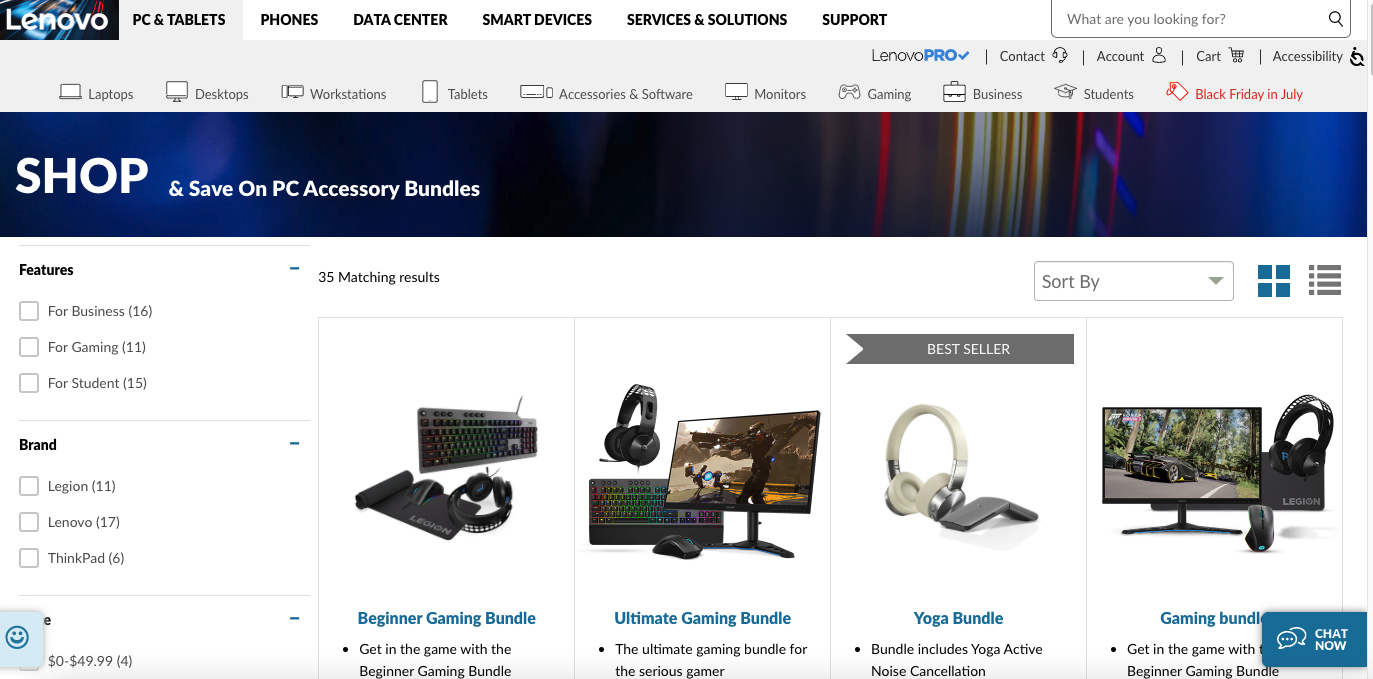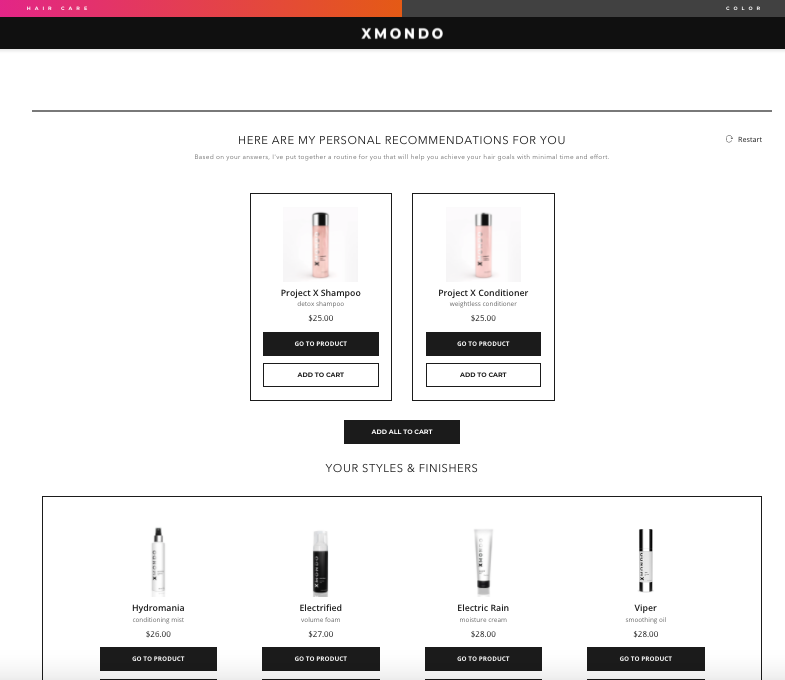It’s frustrating isn’t it?
When you put all your effort into a particular strategy but nothing goes as planned.
Think about your product bundling strategy.
You know you’ve covered the product bundling basics but there’s still a missing piece.
And you’ve probably wracked your brain for answers.
Only to wind up where you began…using the same strategies.
But here’s the thing:
While many eCommerce businesses use the product bundling strategy, not many have made the effort to understand how items should be bundled with respect to consumers’ preferences and buying motives for product bundles.
And that’s a problem.
Ecommerce businesses can longer rely on cookie-cutter strategies as their customers have unique needs.
So what’s the solution?
It all begins with why many ecommerce businesses consider product bundling strategy in the first place.
Curious? Let’s explore more.
Product Bundling Strategy—Why Is It Attractive For Ecommerce?
First, product bundling as a strategy works.
No doubt.
This is why many ecommerce businesses like you embrace it.
But what are the specific motivations that make it attractive?
Here are some:
#1: Increase Sales and Average Order Value
It sounds rather obvious—but this reason is still worth mentioning.
To have a profitable business, you need to increase your revenue consistently because the reality is that costs continue to increase over time.
Moreover, each of your customers has a specific amount they’re willing to pay for your product.
The difference between that price and what your customers pay is called the customer surplus.
Having a product bundling strategy presents an opportunity to capture the maximum amount of this surplus while making your customers feel like they’re getting your products for a steal.
What a great opportunity!
And that’s not all.
Product bundling strategies encourage your customers to spend more money upfront.
Why?
Product bundling strategies decrease the likelihood of sharing revenue with your competitors.
For example, think about selling a product that has accessories like a computer.
If you don’t have this bundled, consumers are likely to get these accessories from other stores.

The bottom line:
A product bundling strategy helps boost total revenue by increasing the amount spent on each transaction.
And even better, multiple items will still cost more than a single product (even when promotional price points are in effect).
Interesting isn’t it?
Absolutely.
#2: Save on Marketing and Distribution
It’s no secret that the cost of acquiring new customers is higher than retaining existing customers.
Therefore, a product bundling strategy seeks to receive a higher initial return on the cost of acquiring new customers.
What’s even more surprising?
Ecommerce businesses that implement a product bundling strategy worry less about customer retention.
#3: Sell Out Old Inventory
Most eCommerce businesses have discovered that bundling allows them to sell out slow-moving inventory.
A product bundling strategy keeps inventory moving at a steady rate.
Moreover, products whose sales are underperforming can get a boost when paired with relevant and popular items.
#4: Customer Trends
Customers want convenience when they shop, and a product bundle strategy simplifies the buying experience.
A well-executed product bundle strategy makes the purchase decision easier for your customers. Bundling also encourages customers to buy.
Instead of expecting your customers to do the hard work, you’re offering a one-stop-shop for them.
The result?
The experience of interacting with your business and purchasing your product is simple and efficient.
The motivations mentioned above indicate that a product bundling strategy makes sense for eCommerce businesses.
So why are you still struggling?
Let’s explore more.
Product Bundling Strategy— 4 (Not So Obvious) Challenges
The truth is that there’s nothing inherently wrong with the concept of a product bundling strategy.
So why wouldn’t it work as intended?
The answer is in the challenges that affect the execution of a product bundling strategy.
So what are they?
Let’s find out.
#1: Generic Plugins
This point is probably controversial.
But the reality is that out-of-the-box “product bundle” plug-ins from content management systems (CMS) aren’t the best option for a product bundling strategy.
Think of plugins with Woo-commerce or Shopify.
Why?
These plugins aren’t fully customizable and may offer limited options.
It may be challenging to understand the logic behind the bundling and, therefore, may not serve your specific needs.
#2: Lack of Personalization
Traditional product bundling strategies lack specific information that can distinguish a customer’s unique needs or wants.
Product bundles created with the traditional strategy may also be very pre-defined.
For example, such bundles would offer pre-selected accessories if you’re buying a computer.
Moreover, personalization may only go as far as gender and not specifics like what kind of experiences the customer prefers for most sites.

#3: Based on Historical Data
While historical purchasing data is helpful it may not take into consideration changing customer trends and needs.
Customer’s tastes and preferences are likely to change over time, but most product bundling strategies don’t consider this.
Most product bundling strategies are also based on historical purchase trends, not on in-the-moment needs.
#4: Static Bundle Offering
Current technology focuses on the creation of static bundles.
However, this is inefficient for today’s consumers or buyers.
Why?
They expect to get product recommendations based on their unique needs and not on another type of customer.
So how can retailers build bundles that directly relate to the customer need vs. a pre-defined one?
Two words. Dynamic bundles.
Dynamic Bundles—Are They the Answer?
The short answer is YES.
A dynamic data-driven bundle is constructed using a new model that combines diverse recommendations with personalized offerings by leveraging consumer profiles and in-session context, in addition to using historical data.
Yes. Historical data is still essential.
You need a solution that automatically maps to a persona profile that can populate with the consumer’s unique needs and interests to produce an individualized propensity-to-buy for any product.
The catch?
This type of solution requires AI, machine learning, and recommendations engines.
AI is well known for helping to recommend products and drive personalization on retail sites, and customers have come to expect personalized experiences.
Product bundling Strategy—Embrace Personalization.
While many businesses embrace product bundling strategy…not all are successful.
So what’s the missing link?
Data personalization.
Embracing data personalization and AI tools helps build better bundles.
Partner with Zoovu today and get ahead of your competition.


